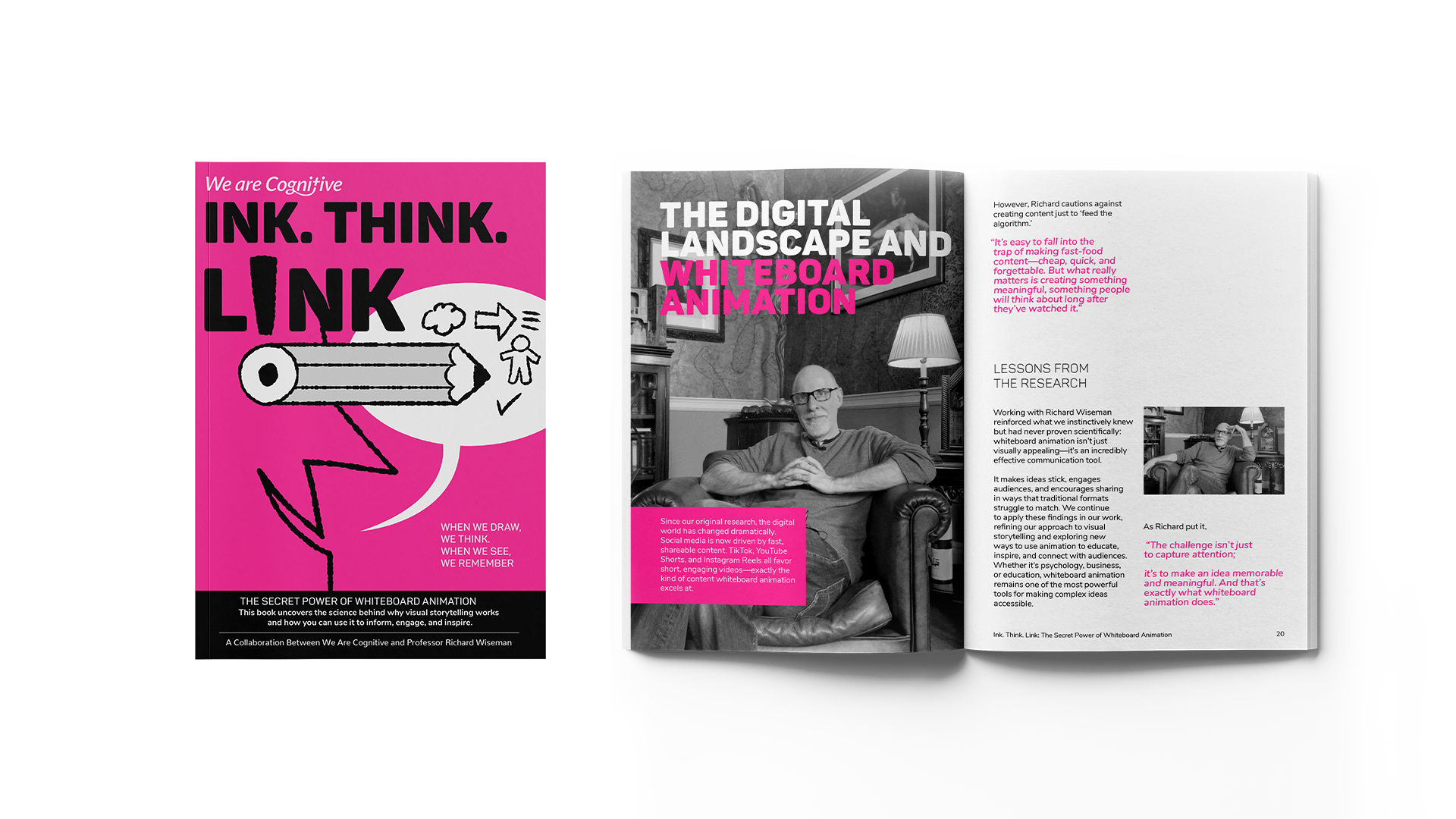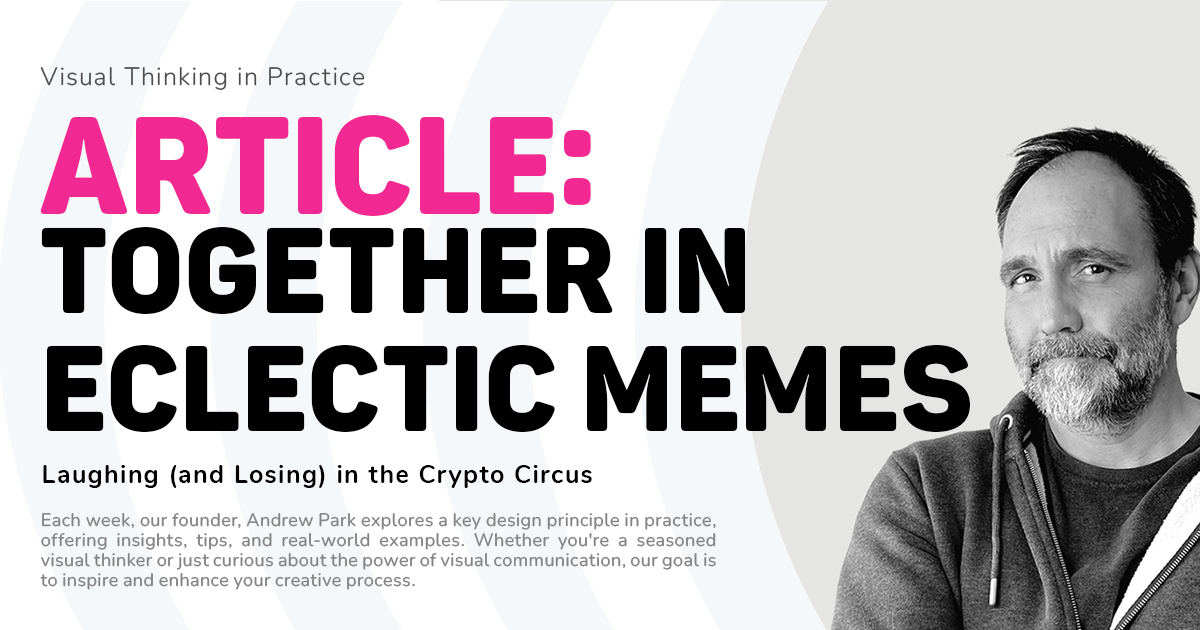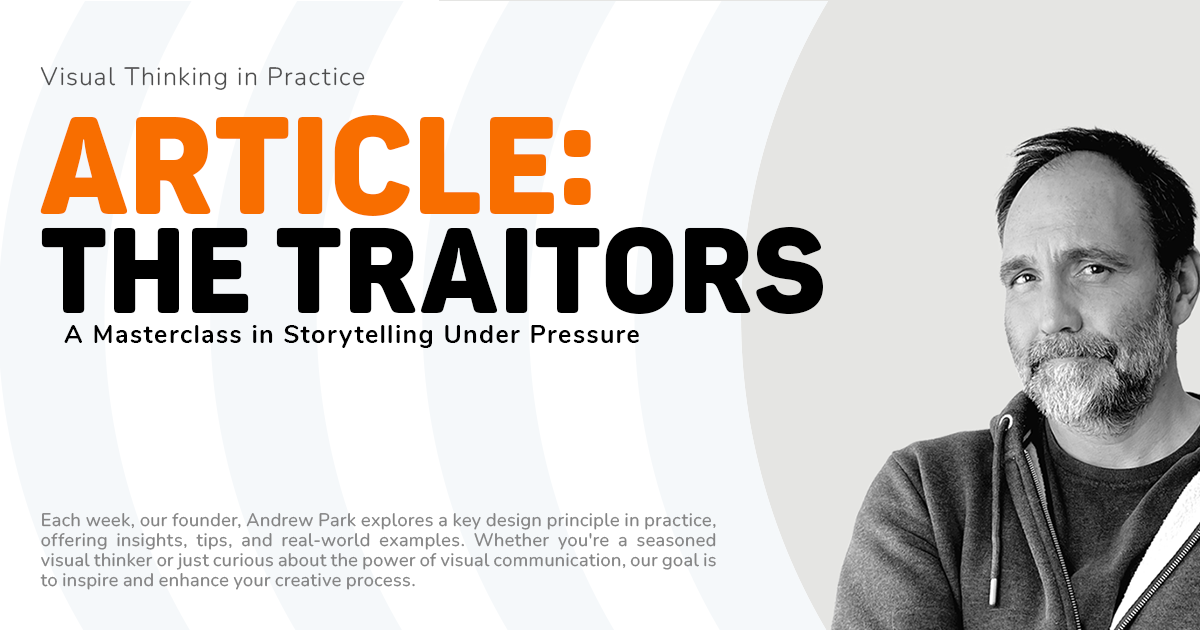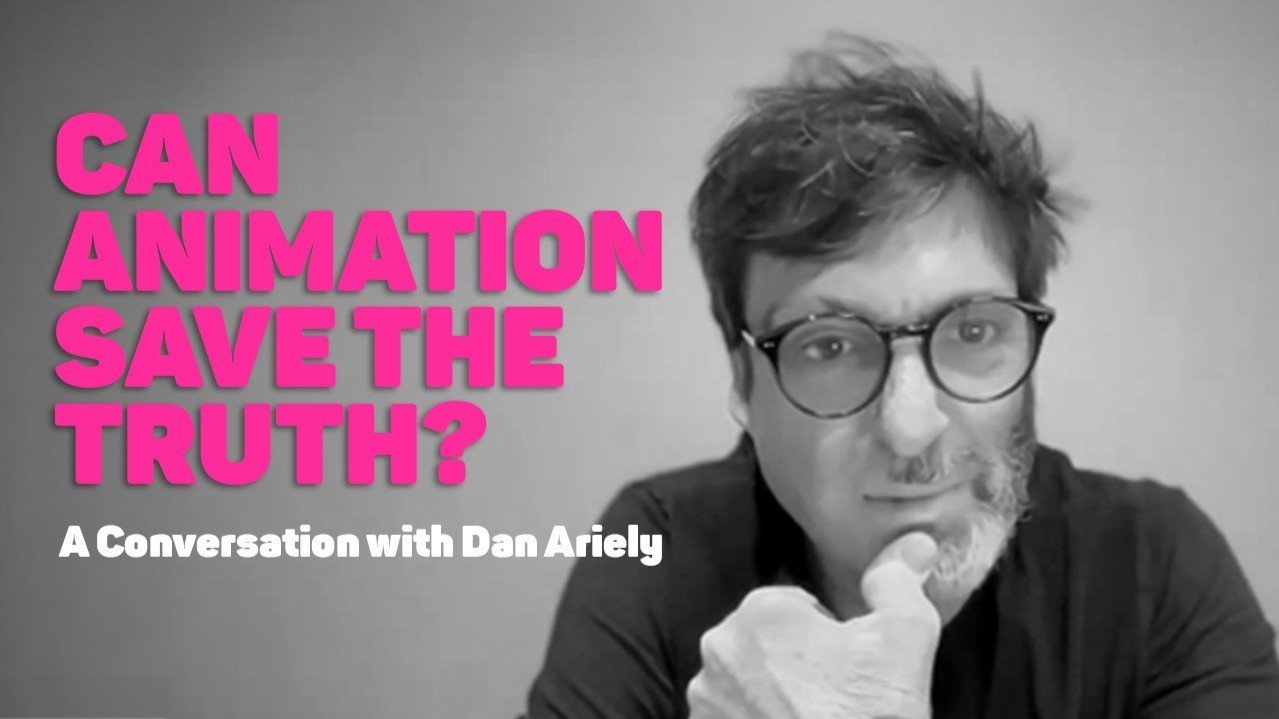I Always Thought, If This Works Whiteboard Animation Is Going To Spread Around The World

I read an interesting interview with Jon Kabat-Zinn the other day. His name might not be on the tip of everybody's tongue, but most people have come across his work in some shape or form.
Whilst studying at MIT, Jon was introduced to Zen meditation by a Zen missionary. I didn't know Zen missionaries even existed! This discovery was the catalyst he needed to develop what we know as Mindfulness-Based Stress Reduction (MBSR) or 'Mindfulness' for short.
If you go into any bookshop today, you will find more than a dozen books about mindfulness and as Kabat-Zinn points out in the article, 'Everyone and his sister are running mindfulness workshops'.
In a similar vein, if you cast your eyes across the shelves of the very same bookshops and newsagents, you’ll probably see twenty different colouring-in books and magazines. There is an avalanche of publications that in essence give you a portable Zen garden on paper.
So how can we tell one good Mindfulness book from another? And how can we decide which calming colouring book will really help us reach the desired Zen-like state? This glut of 'products' all vying for our attention is slightly ironic when the whole idea is to engender a sense of calm! This makes me think back to an RSA Animate that we made from Renata Salecl’s RSA talk on 'Choice'. In it Salecl explained that too much choice is actually really petrifying – a psychological stun gun of sorts!
In some ways I can understand where Kabat-Zinn is coming from. When the idea for the RSA Animate process emerged back in 2008, it didn't just pop out of nowhere in some kind of ‘Eureka!’ moment. Ideas develop over time in the form of slow hunches, and often involve a number of people and a few evolutionary stages.
Just like the trend for colouring-in books is causing the bookshelves to creak, our RSA Animates have created an online world absolutely packed with so-called 'Whiteboard Scribe Animations’. Even though I was key in making the medium happen, I can't help but be overwhelmed by the amount of these animations out there. I am amazed that we made something that could be deemed its own bonafide media, and I love the way it is democratising knowledge in such a powerful way.
But here’s the thing. It isn’t just pretty pictures sped up! I have been involved in Scribing for nearly 20 years and I have been a visual thinker all my life. That's a lot of thinking and drawing! I am always keen to understand my discipline and practice, and I think I know why RSA Animates are so successful.
It’s not that they’re simply a fun, visually interesting 'style', or that the images are a nice thing to watch whilst you listen to some great ideas. I’ll let you into a secret: RSA Animates are a visual rendition of my own cognitive processes. I have always approached them as my personal visual thinking maps – it’s just an amazing and happy coincidence that the world finds them helpful too!
A lot of people want to harness what they see when they watch an RSA Animate. What they don't understand is that the process is very organic. It's a live conversation with myself and the content over a considerable period of time. I spend a lot of time unpacking disparate elements and fashioning them into blocks of meaning in interlocking space. This process is messy and mostly private, and always subject to change and creative shifts.
I was listening to Sam Mendes talking about making 'Spectre' today on Radio 5. He said that making a film is actually quite a private process - even something ultimately as public-facing as a Bond juggernaut. I tend to agree with him here. It was interesting to hear that although a lot was at stake with a lot of stakeholders in making the new Bond movie, he had the total creative support of Eon productions, the studio and owners of the Bond franchise.
On a far smaller scale (and with fewer explosions!), I think of the relationship I have with the RSA. Innovative creativity can only flourish when there is this level of trust on both sides. This trust was built as we worked out what we were doing in the very early days of creating RSA Animates. I’m well aware that most institutions are risk-averse, and sometimes message and meaning are signed off by a committee of well-meaning individuals. "A committee is a cul-de-sac down which ideas are lured and then quietly strangled " said Sir Barnett Cocks (1907 - 1989) who happened to be Clerk of the House of Commons…
The work we do for RSA Animate is a rare and special thing. It is a truly unfettered collaboration and exploration of ideas between an organisation and an artist. It is a ground-breaking way of helping people engage with world-changing ideas, and it is astounding to now see the proliferation of animations in its wake.
Sadly RSI (Repetitive-Scribing-Injuries) put me out of action for a bit, but my hairy hand is back and my Sharpie is black! How are you fixed for the 15th December?
When it comes to your brand, video offers a whole range of ways to feature your brand both subtly and more directly.
When presentations deal with complex ideas, dense information, or diverse perspectives, it’s easy for key messages to get lost. This is where live scribing becomes a game-changer.
Live scribing is the art of visually capturing conversations in real time. It’s part mind-mapping, part storytelling, and all about making complex ideas instantly clear and unforgettable.
We all know the stakes. When communication breaks down in the NHS, it's not just systems that suffer, it’s people. Missed signals. Duplicated work. Delays that ripple out. And beneath it all? A creeping misalignment that turns well-meaning teams into disconnected silos.
From complex ideas and important information to heartfelt and powerful messages, visual storytelling is able to connect with us at a deep level and explain key points in ways that engage and stay with us.
From complex ideas and important information to heartfelt and powerful messages, visual storytelling is able to connect with us at a deep level and explain key points in ways that engage and stay with us.
From complex ideas and important information to heartfelt and powerful messages, visual storytelling is able to connect with us at a deep level and explain key points in ways that engage and stay with us.
It gives us great pleasure to have you join me for this issue, as we explore the fascinating and always relevant subject of "The Medium is the Message."
Clarity doesn’t automatically come from data. It’s something you construct. What people need isn’t a flood of facts—it’s a visual story: built like a narrative, not a spreadsheet, and designed to be scanned, not deciphered.
Too often, presentations overburden the brain with information to decode, prioritise, and interpret. That’s where visual thinking becomes the executive cheat code. Visuals ease that load. They transform complexity into patterns, systems into stories.
The thing it seems almost no one wanted is upon us, tariffs. Like a suspiciously brown shaken-up snow globe, they’re obscuring normal trading relationships, putting global markets on edge and making life even more expensive than it already was.
Audiences rated whiteboard animation 33% more entertaining, 15% more memorable and 66% more likely to be shared. This research helped explain the amazing reaction to the RSA Animates and showcased the potential of whiteboard animation.
Explainer videos and engaging whiteboard animations, have emerged as powerful tools to convey complex messages with simplicity and creativity. Here, we explore nine innovative ways to integrate explainer animations into your marketing strategy, enhancing your brand's visibility, engagement, and conversion rates.
In the modern workplace, where attention spans are short, and information overload is common, utilizing innovative internal communication strategies is crucial. This article explores creative internal comms ideas, focusing on the power of animated explainer videos and whiteboard animations.
Often the very first books we encounter are picture books, our first introduction to the power of rich visual language. While our books change, the power of this language doesn’t. We’ve reflected on visual language, from picture books to explainer videos and whiteboard animation.
Whether it's making complex ideas feel simple or dry subjects feel engaging, our mission is to democratise knowledge. For over twenty years, we’ve been making this mission a reality, working on whiteboard explainer videos for clients across sectors ranging from education and health to international law and energy.
The best bit of our job is working with clients who have big ideas and complex messages. We’re always ready to make a complicated message feel relatable and understandable or help a visionary get their message out to the masses.
As pioneers of whiteboard animation videos, we’re proud of its ability to make the complex simple and share information far and wide. We want to share its explainer and storytelling superpowers with as many people as possible, but to quote a modern-day classic, ‘with great power comes great responsibility.’ That sometimes means saying ‘no’.
In today’s digital era, explainer videos have become indispensable tools for businesses, educators, and creatives to convey complex ideas in a clear and engaging manner. These videos, whether animated or utilizing techniques like whiteboard animation, captivate audiences and simplify intricate concepts.
We see whiteboard animation as a way of democratising knowledge and sharing the ideas that help us all understand and build a better, fairer world. It is packed with educational and visual storytelling tools that allow us to connect with viewers as we make even the biggest ideas accessible and understandable.
What’s the biggest hype narrative you’ve fallen for recently? Drop it below—no judgment. We’ve all bought something at 11 pm thinking it was genius, only to regret it by morning. (Although the Velcro drain unblocker is the shit!)
The Parker Probe isn’t just a shiny example of what humans can achieve when they stop arguing on X for five minutes. It’s also a reminder that big problems—whether they’re cosmic or corporate—need both boldness and a plan.
When we strip away the layers of imposter syndrome, it often boils down to storytelling—about who we are, what we’ve done, and where we’re headed. The narratives we tell ourselves shape our reality, and reframing those stories can unlock a healthier sense of self-worth.
Facebook and Instagram are going “back to their roots” of free expression. Because, clearly, what the internet desperately needed in 2025 was more rucks.
Watching The Traitors is like observing a high-stakes version of a spider weaving its web. Every accusation, every alliance, every teary-eyed confession pulls on the delicate threads of trust until the whole thing collapses in a heap of suspicion.
Ah, New Year’s resolutions. The annual tradition where we collectively trick ourselves into believing we’re only one heroic declaration away from becoming flawless human beings. This year, this will be the year we shed those bad habits like a moulting snake. Right? Wrong!
If you could pin down the essence of truth, could you draw it? That’s the question that lingered in my mind after speaking with Dan Ariely for my RSA Animate documentary—a project allowing me to reconnect with some of the most compelling thinkers of our time.
I have written a lot about failure. It’s something of a fascination for me. I am in a constantly evolving process with failure. When does failure become a success? Are there any true failures or is it just an endless process?
If you’ve spent any time in creative circles, you’ll know that while education has the potential to transform, we’ve been wielding this so-called "weapon" like a blunt instrument for far too long.































Explainer videos are visually dynamic and captivating videos. They excel not only in distilling complex messages into easily understandable narratives but also in etching a lasting imprint on the minds of viewers. This makes explainer videos a must for any marketing strategy!